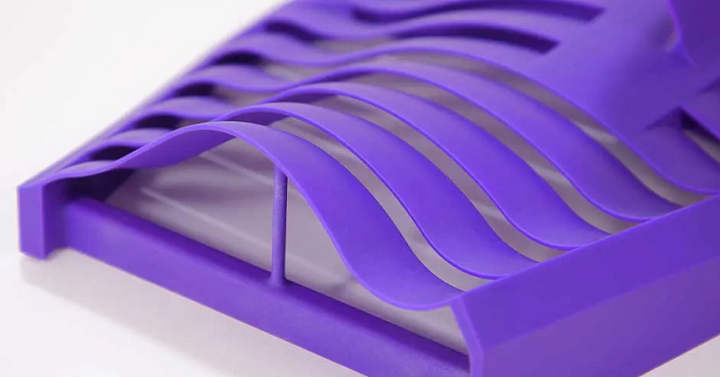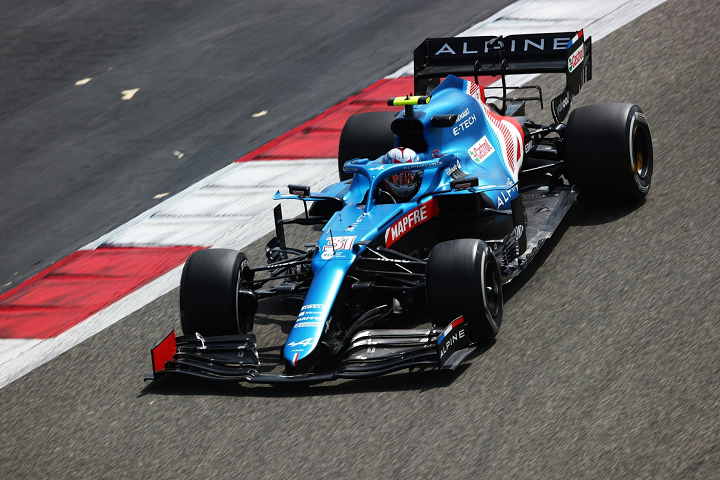This week, 3D Systems (NYSE:DDD) announced the latest member of its Accura material family: Accura Composite PIV. The polymer is meant for Particle Image Velocimetry (PIV) testing applications in wind tunnel testing for motorsports. It joins other materials like Accura Extreme, Accura Fidelity and Accura Bond, Accura Phoenix, and many more.
The 3D printing stalwart partnered with the Alpine F1 Team (formerly Renault F1) to co-develop the material, which has helped the team gain a better understanding of airflow over its cars and expand its wind tunnel investment. When Accura Composite PIV is paired with a complete 3D Systems solution, including its 3D Sprint software, SLA 3D printing, and Application Innovation Group, they can really hit the ground running…or driving, in this case.
“Customer-centric innovation is a guiding force within 3D Systems. Working with Alpine F1 Team to develop our newest material is another example of how we’re leveraging our F1 application expertise to develop advanced solutions that give our customers a competitive edge,” said Kevin Baughey, 3D Systems Segment Leader, transportation & motorsports. “We’ve been impressed by the results the Team has experienced in the wind tunnel, and look forward to seeing their success on the circuit this season.”
When it comes to motorsports and Formula 1 racing, speed is key, and in order to make the cars more aerodynamic, you need to lower the drag; i.e., the friction between the air molecules and the vehicle. To test this out, researchers can blast air past a stationary car in the controlled environment of a wind tunnel, and 3D printing has been used before to create wind tunnel components. According to 3D Systems, which has experience working with the racing industry, 3D printing wind tunnel parts for this type of aerodynamic testing “is virtually a 24/7 operation.” But, the company also says that parts printed with the new Accura Composite PIV material take much less time to prepare overall, and also provide more accurate high-resolution PIV testing data.
3D Systems’ SLA 3D printing makes it possible for F1 companies to efficiently fabricate rigid, aerodynamic parts that include features like integrated pressure tappings (openings within a barrier or wall that bind material flow). These components are then utilized in testing that uses laser-based particle image velocimetry (PIV): an optical method of flow visualization that’s used to obtain instantaneous velocity measurements. Because reflections of laser light from background surfaces can reduce the image quality, it can be tough to get reliable, accurate PIV measurements. That’s why the new Accura Composite PIV is so helpful—it’s a reflection-mitigating SLA material that comes in a high-contrast color, which is perfect for PIV testing of wind tunnel model parts.
Using this new material, the Alpine F1 team has shown that it is in fact able to lower the effect of laser reflection in PIV testing, which is helping their aerodynamicists create and manufacture a faster racecar.
“We’ve proudly collaborated with 3D Systems for many years. The deep expertise of their application engineers and their industry-leading solutions have been an invaluable part of our innovation team,” stated Pat Warner, Alpine F1 Team’s advanced digital manufacturing manager. “It’s been exciting to co-develop Accura Composite PIV and see the benefits it’s bringing to our process. We produce nearly 500 parts per week for wind tunnel testing. Due to the material’s unique optical characteristics, we are now collecting more reliable data from our PIV system in the wind tunnel.”

Parts produced using Accura Composite PIV take significantly less time to prepare – from CAD to wind tunnel – facilitating more accurate data for aerodynamic analysis.
When using other materials to print wind tunnel parts, a time-consuming, multi-step process is often involved in order to get the necessary finish that’s needed for wind tunnel testing. Because the new co-developed Accura Composite PIV has such a unique color, 3D Systems says it can actually “compress the workflow” and get rid of some of the steps for higher efficiency. However, its color isn’t the only benefit of the new Accura Composite PIV material. It also has a high tensile and flex modulus, with a heat deflection temperature of 100°C—meaning it can hold up well intense wind tunnel testing. It’s been formulated to use with 3D Systems’ SLA 3D printing and 3D Sprint software.
Subscribe to Our Email Newsletter
Stay up-to-date on all the latest news from the 3D printing industry and receive information and offers from third party vendors.
You May Also Like
Boom Supersonic Test Flies Demonstrator Aircraft
Boom Supersonic hopes to revolutionize air travel by reintroducing supersonic passenger flights. The company has amassed over $700 million in funding, with notable contributions from entities like Japan Airlines, and...
Conglomerates Are Auctioning GE Metal 3D Printers and More
As the additive manufacturing (AM) industry continues to slough through its economic downturn, we’ve seen not only smaller firms like Uniformity Labs and Arevo go belly up, but larger entities restructuring in...
Interview: GE Additive Provides Series 3 Metal Binder Jet Update
For another year running, I survived the bustling insanity that is formnext. With a reported 859 exhibitors, 196 speakers, 32,851 visitors (50% international), and 54,000 m² of exhibition space, Europe’s...
Del Toro’s Pinocchio Achieves Stop-Motion First with Metal 3D Printed Metal Puppets
Did you know that the stop-motion puppetry featured in Guillermo del Toro’s 2022 film Pinocchio was accomplished through the use of metal 3D printing? Our story begins in the year...































